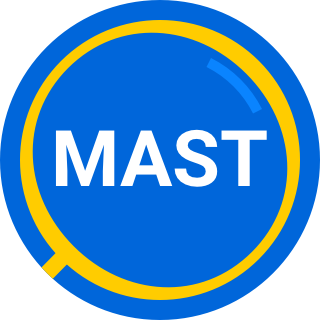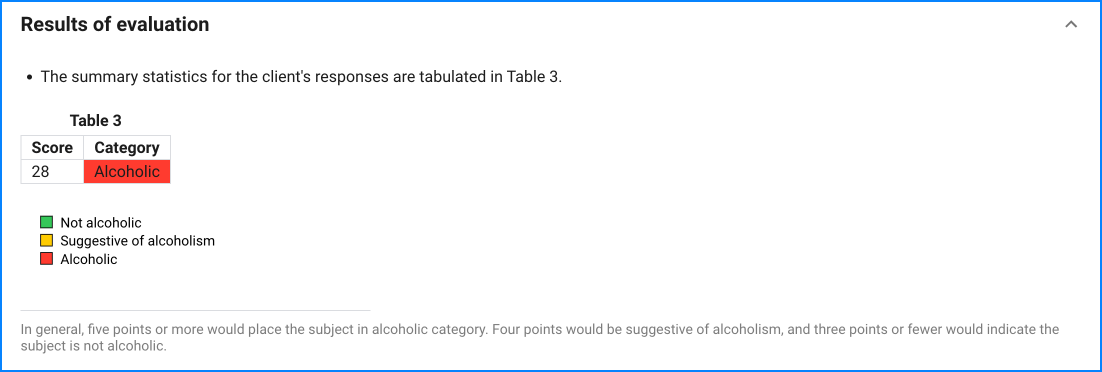The MAST contain 25 items (0-24) with weighted scoring as follows: zero point, 1 item (Item 0); one point, 4 items (Items 3, 5, 9 and 16); two points, 16 items (Items 1, 2, 4, 6, 7, 10, 11, 12, 13, 14, 15, 17, 21, 22, 23, 24); five points, 4 items (Items 8, 18, 19, 20). In addition, two of the items are scored for the number of times the event occurred, so that the subject has a score of five for each episode of delirium tremens (Item 18) and a score of 2 for each alcohol arrest (Items 23 and 24).
Negative responses are alcoholsc responses for items 1, 4, 6 and 7.
A score of three points or less was considered nonalcoholic, a score of four points was suggestive of alcoholism, and a score of five points or more indicated alcoholism.



